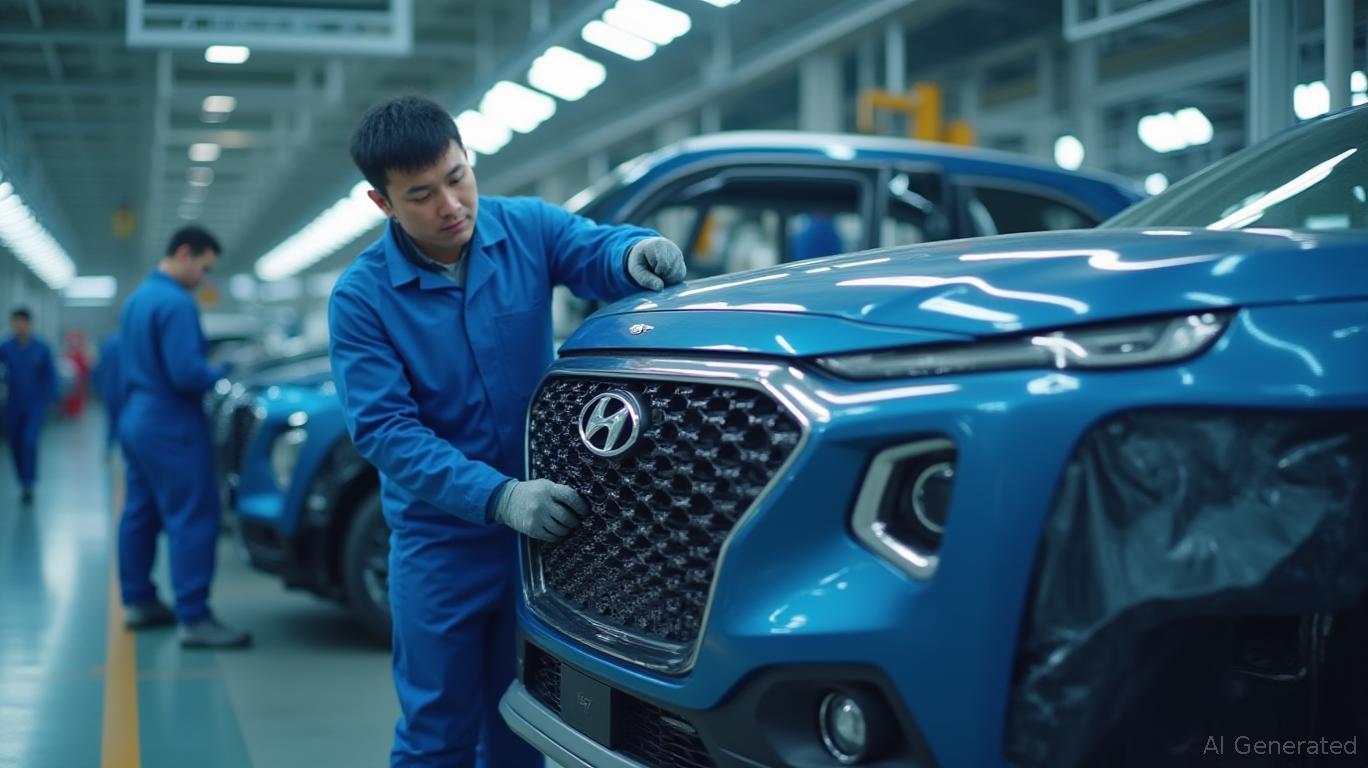Sector-Specific Opportunities in South Korea: Navigating Inflation and U.S. Tariff Risks
South Korea's economy faces dual challenges: rising living costs and protracted U.S. tariff negotiations that threaten its export-driven industries. While inflation remains moderate by historical standards, geopolitical tensions and trade policy uncertainties are reshaping investment landscapes. This article dissects sector-specific opportunities and risks, focusing on automotive, semiconductors, and defense—three industries pivotal to South Korea's economic health.
Inflation: A Moderate Headwind, but Room for Policy Buffering
The latest data shows South Korea's consumer price index (CPI) rose 2.1% year-on-year in April 2025, easing from a decade-high 5.9% peak in 2022. Projections suggest the CPI could reach 114.76 by Q2's end, a modest rise from November 2024's 114.40. The Bank of Korea (BOK) has slashed rates by 0.75% since early 2025 to mitigate economic pressures, with inflation expected to remain subdued amid softening global commodity prices.
While core inflation (excluding food and energy) remains sticky at 1.8%, the BOK's easing cycle provides a buffer for domestic demand-sensitive sectors. However, sectors reliant on imported inputs—such as chemicals or machinery—face lingering cost pressures.
U.S. Tariff Talks: A High-Stakes Negotiation with Sectoral Winners and Losers
The U.S. and South Korea are locked in tense tariff negotiations, with critical deadlines looming in July 2025. Current U.S. tariffs on South Korean steel and aluminum stand at 50%, while reciprocal South Korean tariffs on U.S. goods are suspended until July at 10%. Key developments include:
- Automotive Sector:
South Korea's automotive industry—dominated by Hyundai and Kia—depends heavily on U.S. exports. A resolution to suspend Section 232 tariffs on steel and aluminum would lower production costs, as these inputs account for ~20% of vehicle manufacturing expenses. A deal could also ease fears of retaliatory tariffs on Korean cars, which currently face a 2.5% U.S. duty but could be raised if talks fail.

Investment Play: Hyundai Motor (KS:005380) and Kia (KS:000270) could rebound sharply if tariffs are reduced. Both stocks have underperformed the KOSPI index amid uncertainty, but a resolution could unlock upside.
- Semiconductors:
The U.S. is probing potential tariffs on semiconductors, a sector representing 20% of South Korea's GDP. Samsung Electronics (KS:005930) and SK Hynix (KS:000660) dominate this space. While direct tariffs on chips are unlikely, U.S. restrictions on advanced semiconductor exports to China could indirectly benefit Korean firms by reducing competition. However, a broader trade conflict with the U.S. could disrupt global supply chains.
Risk Alert: Companies with heavy exposure to China, like Samsung's display division, face dual pressures from U.S. tariffs and Beijing's retaliatory measures.
- Defense and Military Cost-Sharing:
The U.S. is pressing South Korea to increase its contribution for hosting 28,500 U.S. troops. A deal could redirect domestic funds toward defense spending, benefiting firms like LIG Nex1 (KS:010140) and Hanwha Systems (KS:054600), which produce missiles and cybersecurity systems.
Geopolitical Crosscurrents: South Korea's conciliatory stance toward China under President Lee Jae-myung risks U.S. disapproval, complicating tariff talks. Investors should monitor diplomatic signals ahead of the G7 summit.
Sector-Specific Investment Strategy
Optimistic Plays:
- Automotive: Hyundai and Kia offer asymmetric upside if tariffs ease, with both stocks trading at 8x–9x forward EV/EBITDA, below their 10-year averages.
- Defense: LIG Nex1 and Hanwha Systems could benefit from increased military spending, with LIG's missile contracts up 15% in 2024.
Caution Advised:
- Semiconductors: While Samsung and SK Hynix are global leaders, U.S. export curbs to China and potential chip tariffs create tail risks.
- Consumer Discretionary: Sectors like tourism or retail may struggle if inflation resurges, though BOK rate cuts provide some support.
Conclusion: Navigate with Precision
South Korea's macroeconomic landscape offers opportunities for selective investors. Sectors like automotive and defense are poised to gain from tariff resolution and geopolitical alignment, while semiconductors demand close monitoring of U.S.-China tensions.
Final Take: Focus on companies with diversified revenue streams, minimal tariff exposure, and pricing power. For aggressive investors, Hyundai and LIG Nex1 could deliver outsized returns if trade talks conclude favorably. For caution, avoid sectors tied to China-U.S. tech rivalry until clarity emerges.
Stay informed on real-time developments by tracking the Bank of Korea's quarterly CPI reports and U.S.-ROK trade negotiations.

Comments
No comments yet